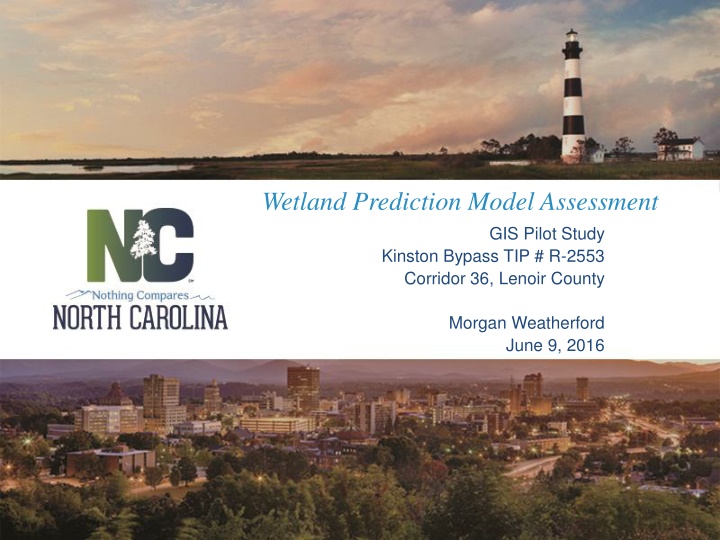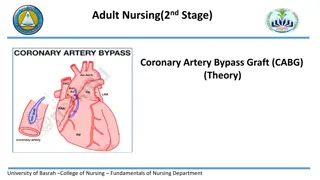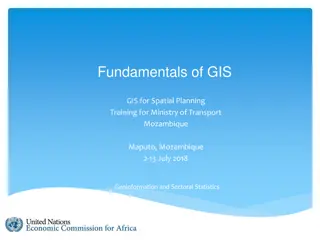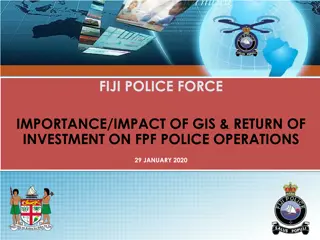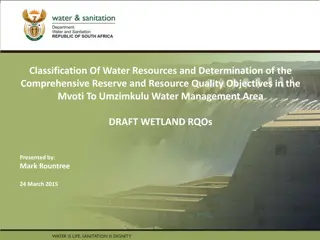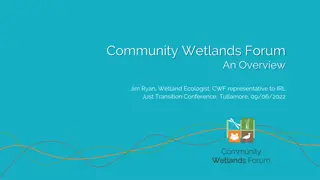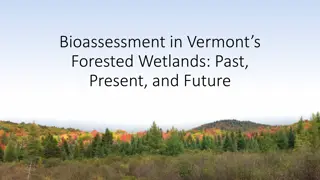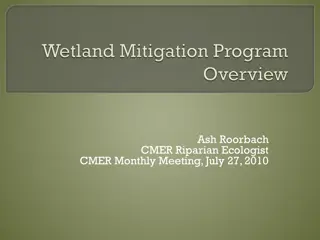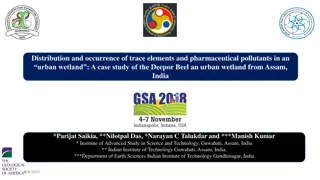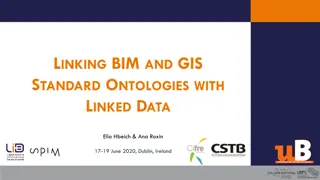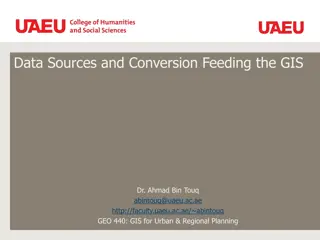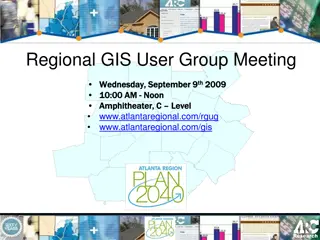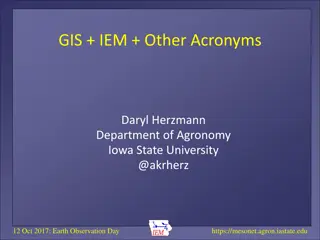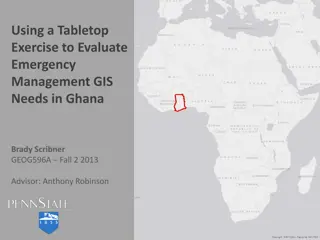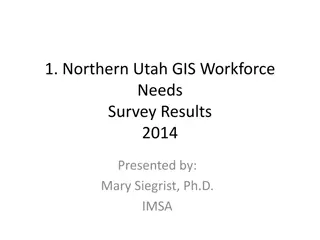Wetland Prediction Model Assessment in GIS Pilot Study for Kinston Bypass
Wetland Prediction Model Assessment was conducted in a GIS pilot study for the Kinston Bypass project in Lenoir County. The goal was to streamline project delivery through GIS resources. The study focused on Corridor 36, assessing various wetland types over a vast area using statistical and spatial analyses. The assessment revealed 166.12 acres of wetlands, with specific wetland types delineated. The model's prediction accuracy and assessment for each ecoregion were also detailed in the study.
Download Presentation

Please find below an Image/Link to download the presentation.
The content on the website is provided AS IS for your information and personal use only. It may not be sold, licensed, or shared on other websites without obtaining consent from the author.If you encounter any issues during the download, it is possible that the publisher has removed the file from their server.
You are allowed to download the files provided on this website for personal or commercial use, subject to the condition that they are used lawfully. All files are the property of their respective owners.
The content on the website is provided AS IS for your information and personal use only. It may not be sold, licensed, or shared on other websites without obtaining consent from the author.
E N D
Presentation Transcript
Wetland Prediction Model Assessment GIS Pilot Study Kinston Bypass TIP # R-2553 Corridor 36, Lenoir County Morgan Weatherford June 9, 2016
Wetland Prediction Model Assessment Project Streamlining goal was to reduce costs and project delivery times by relying on GIS resources Kinston Bypass (R-2553) selected as Pilot Project Project was deprioritized but Team sought to complete Wetland modeling and assessment Transportation
Wetland Prediction Model Assessment Corridor 36 chosen as test corridor Variation of ecoregions and wetland types 1,718 acres (500 feet wide and 28 miles long) Represented by 187,117 grid cells each 20ft x 20ft as the basis of the assessment using frequency analyses in statistical software and spatial analyses in ArcGIS Field delineated entire corridor 166.12 acres of corridor delineated as wetlands Total of 76 wetland polygons Transportation
Study Area with Ecoregions Transportation
Model Assessment Methodology Transportation
Wetland Prediction Model Assessment NC WAM Type Acreage Riparian/Non-riparian 0.48 Non Basin Wetland 0.01 Non Hardwood Flat 41.77 Non Pine Flat 26.75 Non Pocosin 0.04 Non Seep 19.37 Rip Bottomland Hardwood Forest 9.44 Rip Headwater Forest 6.40 Rip Non-tidal Freshwater Marsh 61.85 Rip Riverine Swamp Forest 166.12 Rip-97.06 ac. Non-69.05 ac. Total Table 1: Total acres of delineated wetlands in Corridor 36 by NC WAM wetland type. Transportation
Wetland Prediction Model Assessment The Prediction Category for All Points in the Corridor 13% 2% 7% 78% Correctly Predicted Non-Wetland Wetlands Predicted as Non-wetlands Correctly Predicted Wetland Non-wetlands Predicted as Wetlands Chart 1. The percentages of the correct and incorrect predictions for all points in the corridor. Transportation
Wetland Prediction Model Assessment Ecoregion % of Corridor Specificity % Sensitivity % Overall % 38.1 79.5 59.5 77.9 CF 18.5 89.8 83.4 89.3 RCP 43.4 93.4 87.8 92.6 SFLT Table 2. Model assessment for each ecoregion. Ecoregion Riparian/ Non- riparian Specificity % Sensitivity % Overall % Non 80.2 53.3 78.5 CF Rip 75.7 70.6 74.8 CF Non 95.1 90.0 94.8 RCP Rip 60.4 75.9 63.9 RCP Non 94.0 N/A 94.0 SFLT Rip 87.2 88.0 87.7 SFLT Table 3. Model assessment for riparian/non-riparian areas in each ecoregion. Transportation
Wetland Prediction Model Assessment NC WAM Wetland Type Predicted Correctly % Total # of Actual Wetland Cells Acres Not Predicted 90.4% 6741 5.9 Riverine Swamp Forest 87.5% 4530 5.2 Pine Flat 43.5% 2911 15.0 Pocosin 60.7% 2107 7.6 Bottomland Hardwood Forest 74.5% 1037 2.4 Headwater Forest 56.4% 693 2.8 Non-Tidal Freshwater Marsh 45.0% 49 0.2 Basin Wetland 100% 5 0.0 Seep 0% 2 0.02 Hardwood Flat Table 6. Number of correctly predicted wetland cells for each NC WAM wetland type. Transportation
Wetland Prediction Model Assessment Results 75.8% of the wetland cells in the corridor were modeled correctly Only 12 wetlands (16%) of the total 76 polygons were completely missed by the model. These 12 wetlands totaled to 2.44 acres or 1.5% of the total delineated wetland acreage. 85.9 % of the non-wetland cells in the corridor were modeled correctly Transportation
Over-Predictions Ecoregion % Of Over-Predictions on Hydric Soils Rolling Coastal Plain Riparian 97% Rolling Coastal Plain Non-riparian 62% Carolina Flatwoods Riparian 63% Carolina Flatwoods Non-riparian 97% SFLT Riparian 25%* SFLT Non-riparian 94% Transportation
Ongoing Work Rolling Coastal Ecoregion Riparian Predictions - Effects of the Classification Threshold on Model Accuracy 100 90 80 70 Percent Correct 60 50 40 30 % Overall Correctly Predicted Cells % Correctly Predicted Wetland (Sensitivity) % Correctly Predicted Non- wetland (Specificity) 20 10 0 0.5 0.55 0.6 0.65 0.7 0.75 0.8 0.85 0.9 0.95 Threshold Transportation
Ongoing Work Rolling Coastal Ecoregion Non-riparian Predictions - Effects of the Classification Threshold on Model Accuracy 100 90 80 70 Percent Correct 60 50 40 % Overall Correctly Predicted Cells % Correctly Predicted Wetland (Sensitivity) % Correctly Predicted Non- wetland (Specificity) 30 20 10 0 0.5 0.55 0.6 0.65 0.7 0.75 0.8 0.85 0.9 0.95 Threshold Transportation
Ongoing Work Carolina Flatwoods Ecoregion Riparian Predictions - Effects of the Classification Threshold on Model Accuracy 100 90 80 70 Percent Correct 60 50 40 % Overall Correctly Predicted Cells 30 % Correctly Predicted Wetland (Sensitivity) 20 % Correctly Predicted Non- wetland (Specificity) 10 0 0.5 0.55 0.6 0.65 0.7 0.75 0.8 0.85 0.9 0.95 Threshold Transportation
Ongoing Work Carolina Flatwoods Ecoregion Non-riparian Predictions - Effects of the Classification Threshold on Model Accuracy 100 90 80 70 Percent Correct 60 50 40 % Overall Correctly Predicted Cells 30 % Correctly Predicted Wetland (Sensitivity) 20 % Correctly Predicted Non-wetland (Specificity) 10 0 0.35 0.4 0.45 0.5 0.55 0.6 0.65 0.7 0.75 0.8 Threshold Transportation
Ongoing Work Preliminary Testing of WAMAT Automation Tools on study area One model No differentiation between ecoregions or riparian/non-riparian Overall Accuracy 72% From start to finish 3 hours, 23 minutes Reduced model delivery time by 99.8% for Lenoir County Transportation
